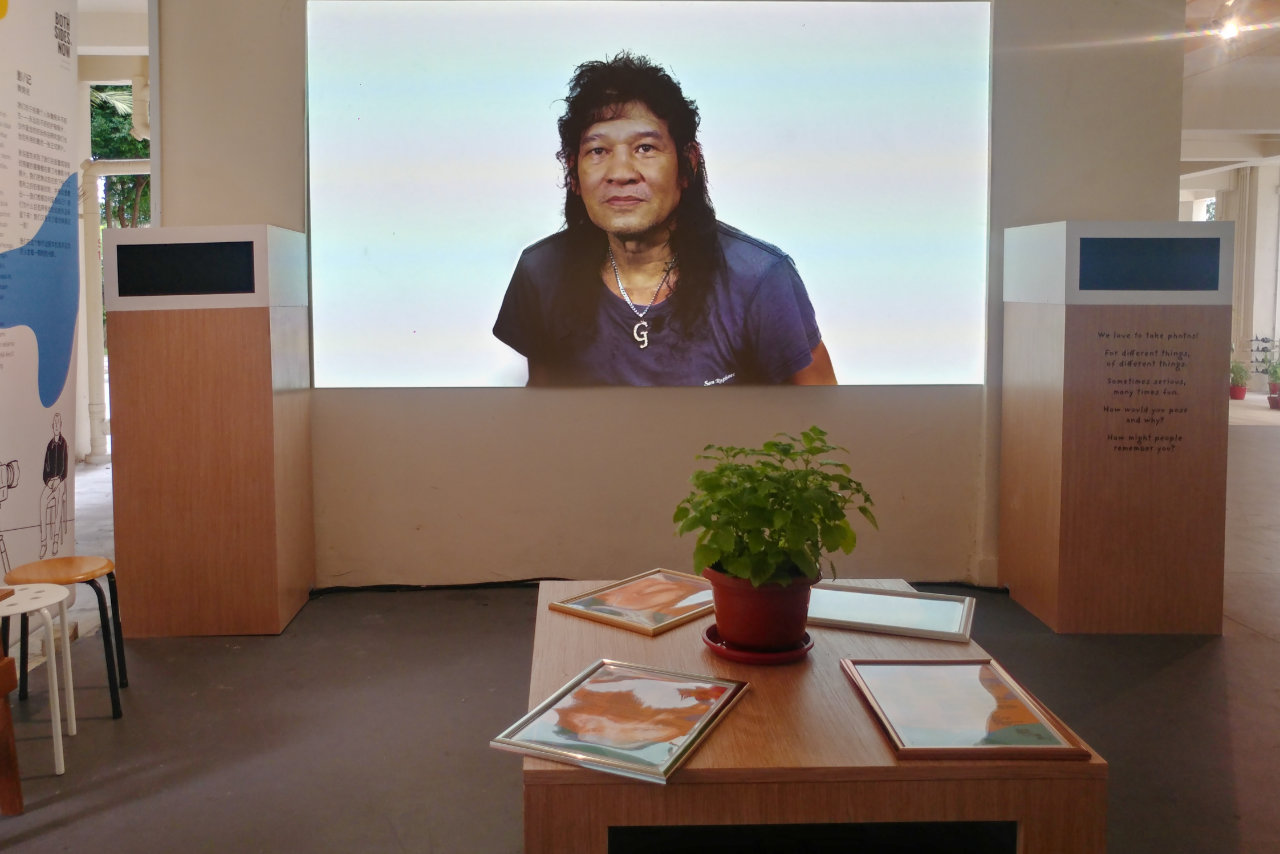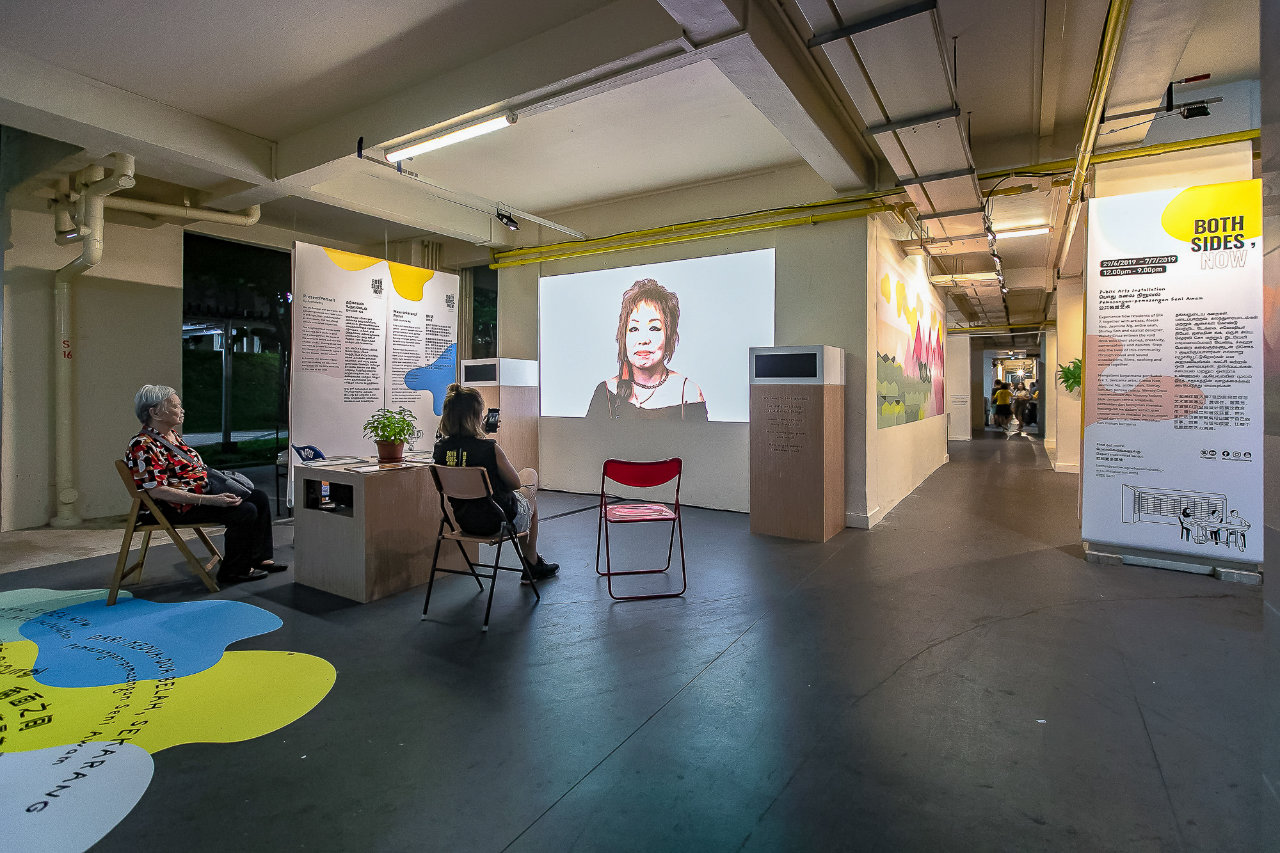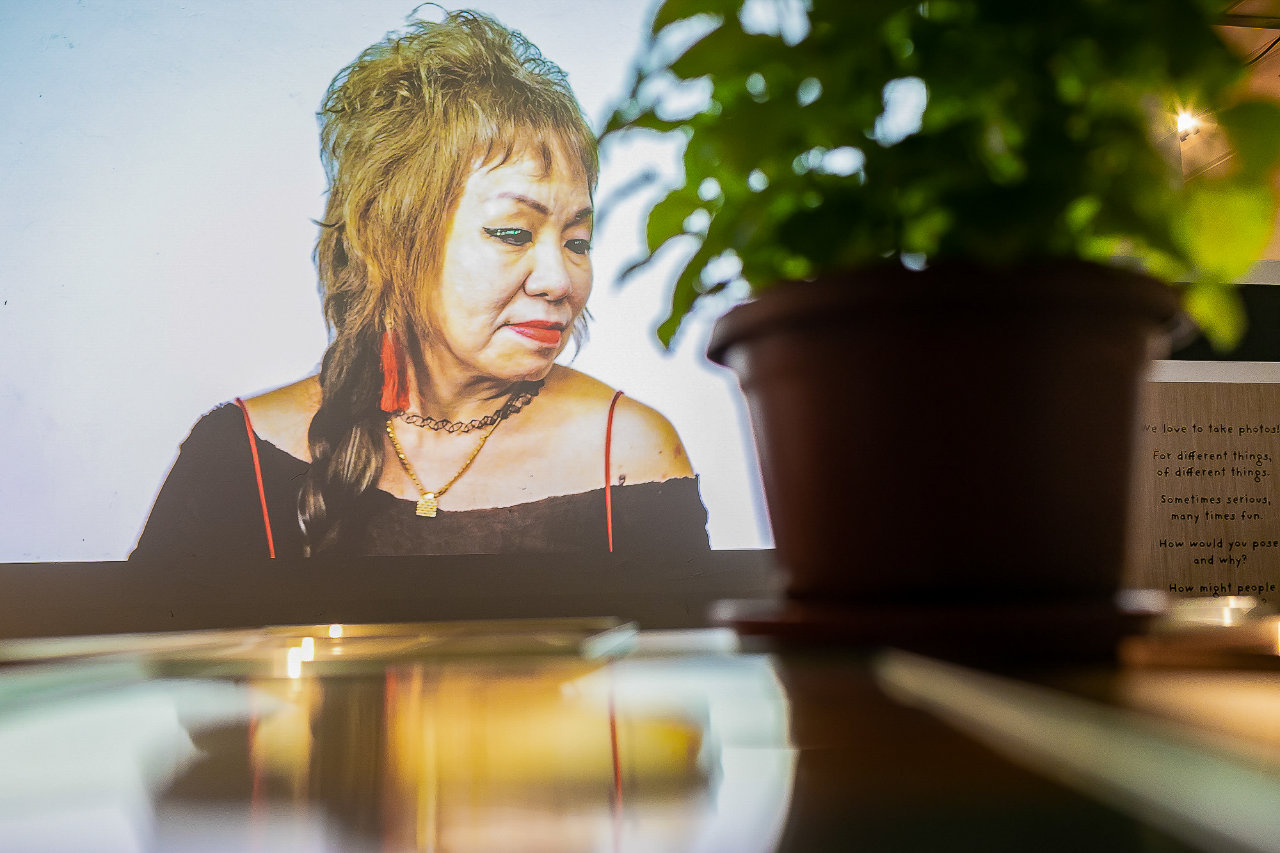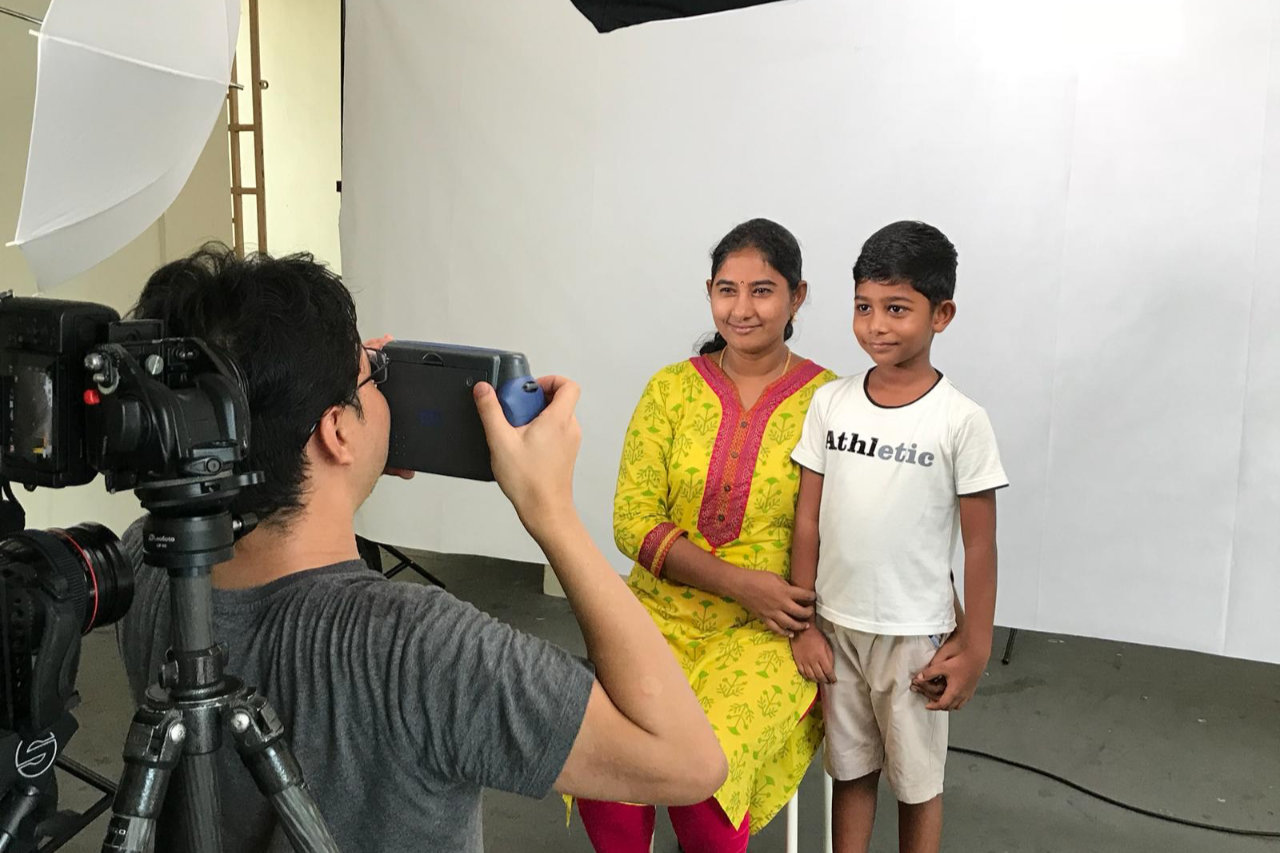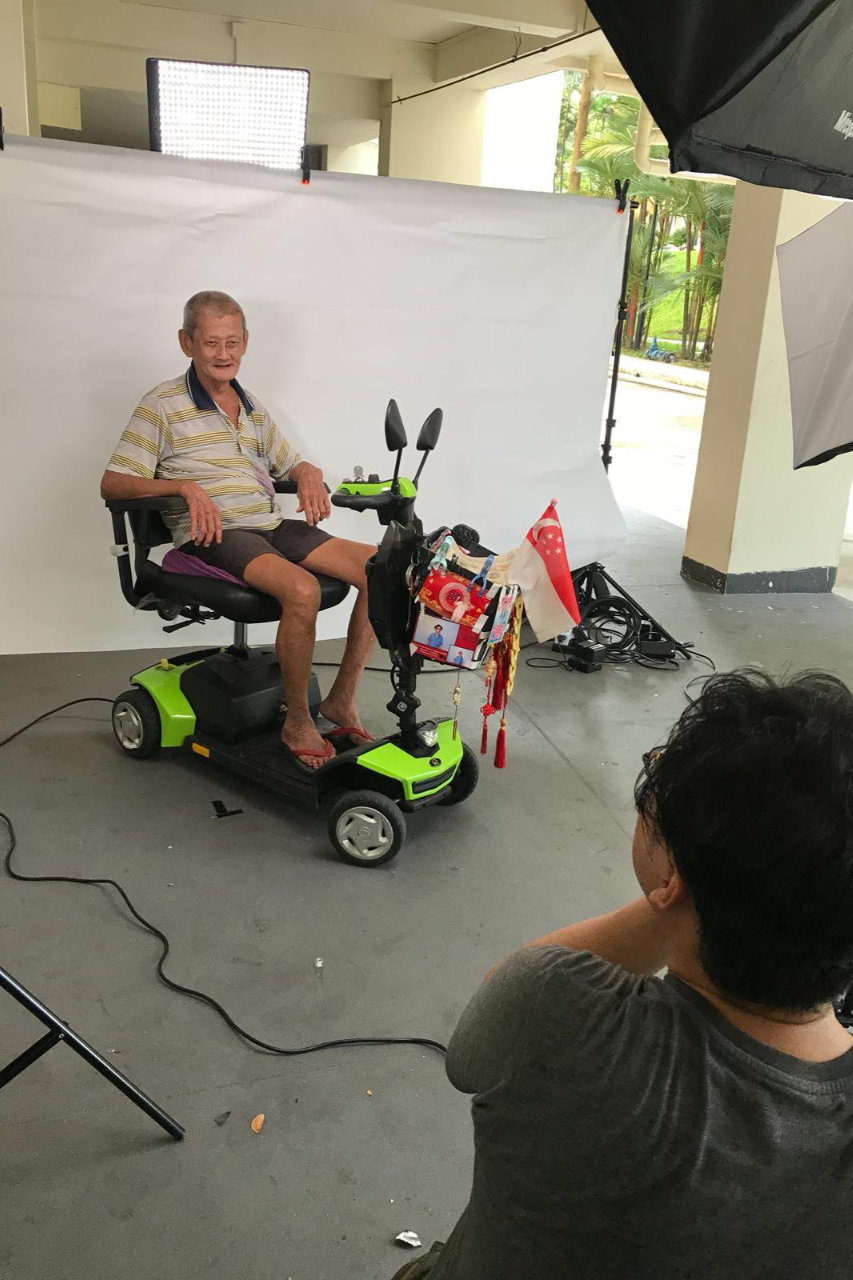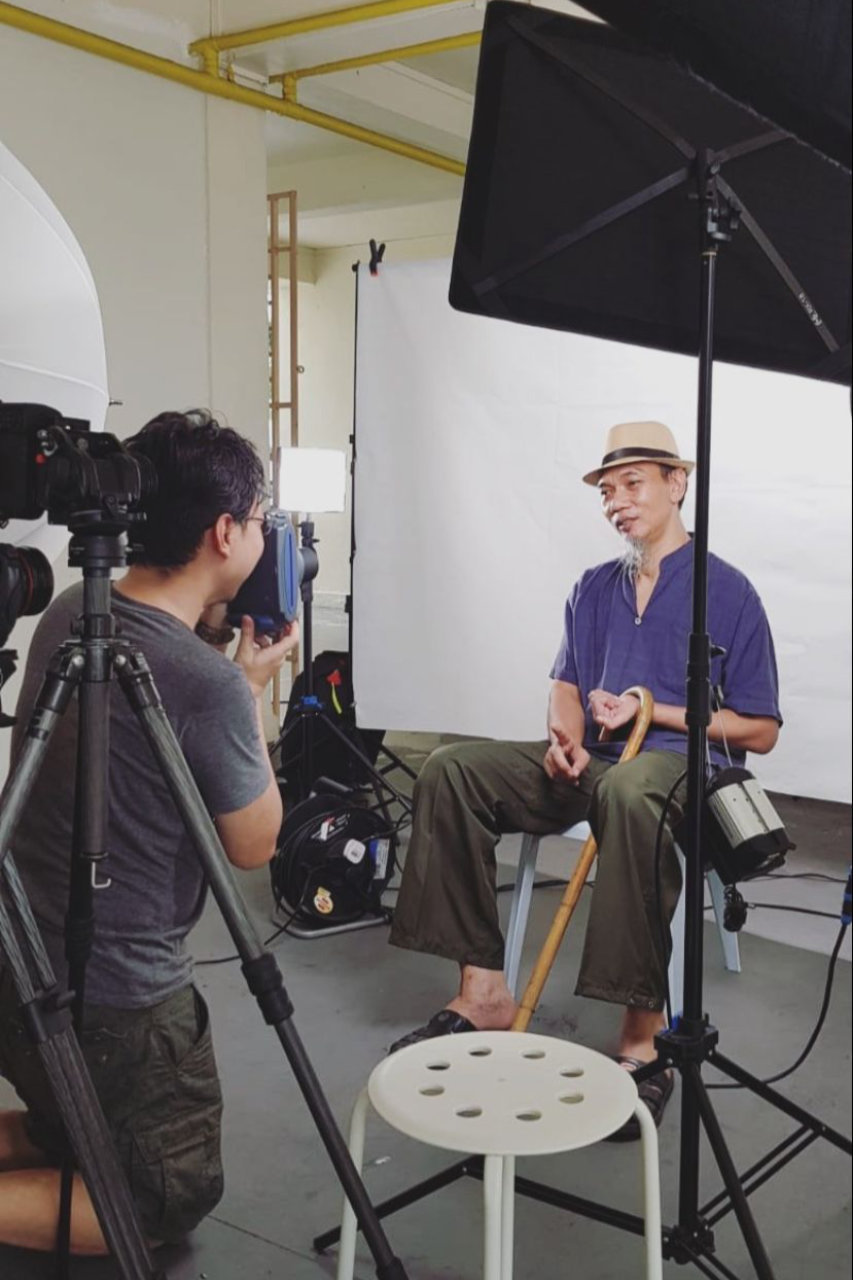About the Project
Why do we take portraits? Do portraits present you as you are now, captured in the present for the present, or for the unknown future when you are not present? The project invited residents to have their portraits taken and share what they might use these for. Some might want these to be a passport photo. Others might eventually use them for their wake, obituary, or for the tablet of their columbarium niche.
Some might just want to gaze on themselves at a time when not many others take a glance at them. Some might culturally not be accustomed to taking portraits – but might use this as an opportunity to share how else they might use this, and also share why portraits are not common for them – and how else they remember loved ones, long-passed. Through this process of photo-taking, residents were invited to share these thoughts.
The video portraits were projected in their void deck – at the actual spaces that they use each day, and now with their expressions mapped onto the humble walls of their living spaces, to then see themselves in a different light.
The project also invited neighbours and visitors to be present, to gaze upon these portraits of their resident-friends, AND receive the gazes back, as the team reflected along with them.
Creation Process
Time was spent in the neighbourhood, hanging out in the void deck with residents, building on conversations, and getting to know each other. With some familiarity and trust, the team were able to touch on more delicate topics, on the rhythms of life in their block, where they are in their lives right now, and their thoughts on the last chapter of their lives.
The team were also mindful that there were residents who were not ready to have conversations on end-of-life issues, not with their family members, but perhaps they could start by talking to someone neutral such as themselves.
It was decided to use the form of portrait-taking to allow them to embed these conversations. There were moments where residents shared some sobering sentiments, about their anxieties about loved ones leaving them, or the ones where they will one day leave. Other anxieties were shared by some of the residents who are by themselves, without any support of family networks.
The actual portrait photos were processed and enlarged to various sizes, put into photo frames and presented to the residents. It was a lovely moment to share these with the residents and to take in their reactions looking upon themselves, pondering on what was captured, what is expressed within the frame – some were surprised, a handful very pleased.
These portrait photos are for the residents to share with whoever they choose or to even keep personal, confidential for themselves, for now.
The team deliberately did not show the actual portrait photos in the final video artwork for the public, and instead focused on the moments before and after the shutter clicks – as to maintain that privacy. Visitors could also wonder which expression the portrait-sitters might have chosen and what they/you (the visitor) might choose for their portrait.
Watch this video on the creation process, together with other artworks in the public art installation.
Credits
Artist
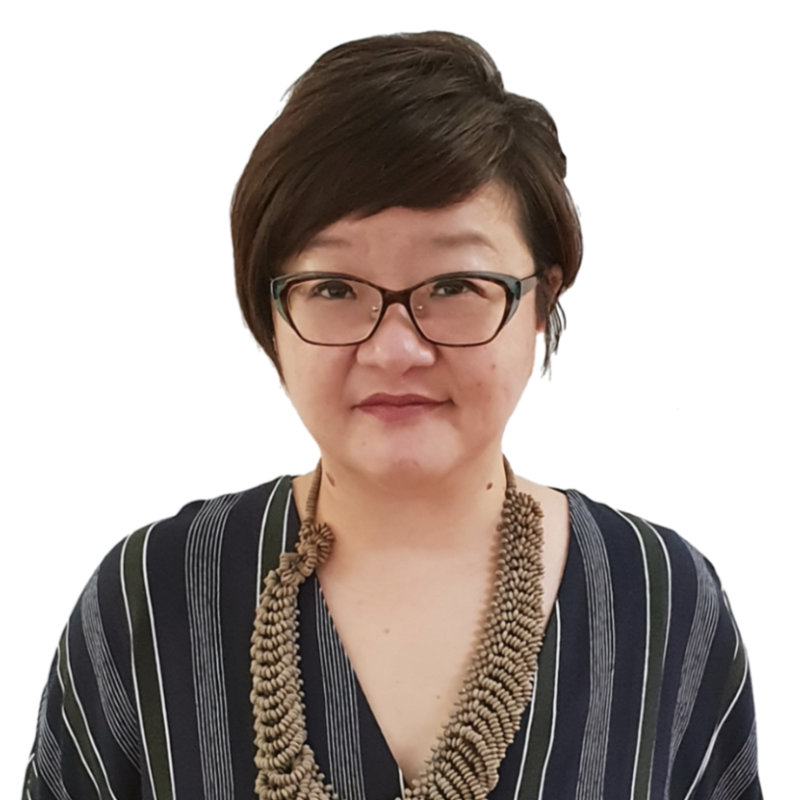
Jasmine Ng is a film-maker/educator with extensive experience directing and executive-producing, from award-winning shorts (Moveable Feast) to feature film work (Eating Air) and broadcast work for international channels (Discovery Channel, National Geographic). She has served on many film juries and pitch panels in Singapore and in the region.
As a film lecturer, she has taught at local and regional institutes and arts centres and has mentored for the National Arts Council (NAC) Young Artists series as well as their SilverArts programme for seniors. Jasmine has also conceptualised cross-disciplinary works for civic arts engagement projects like IPS PRISM for the Institute of Policy Studies (IPS).
Participant Art-Makers
Chia Gek Hua (Anna)
Gopalsamy Priya
Jamil Sareh
Junah Binte Bugiman
Kamin Asim
Lim Kui Fang
Lim Watt Lock
Santhosh
Soh Lay Wah
Tan Kwee Seng
Community Voices
“The exhibition has addressed the issue [end-of-life] in a tactful way and has made me think more deeply about the issues.”


